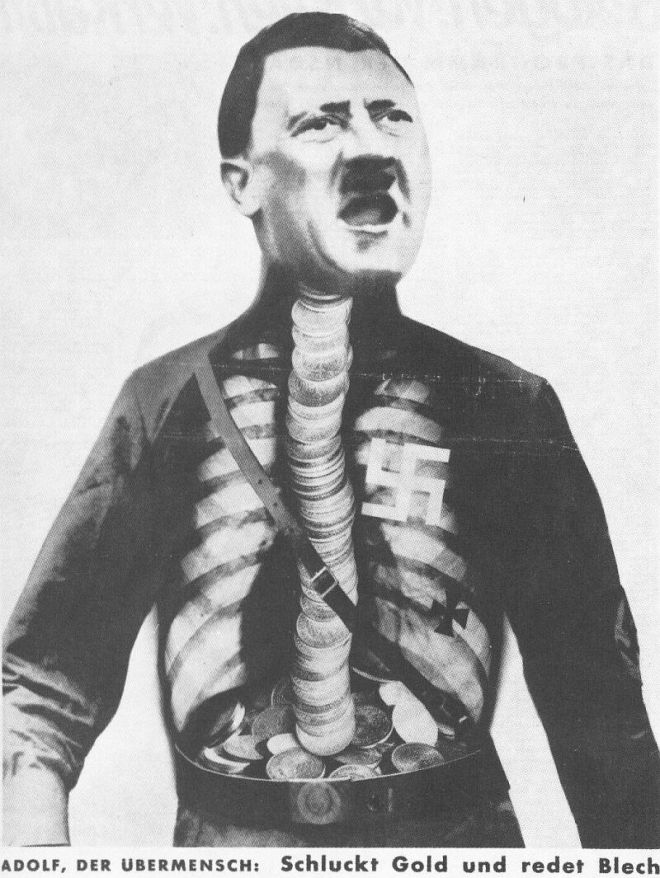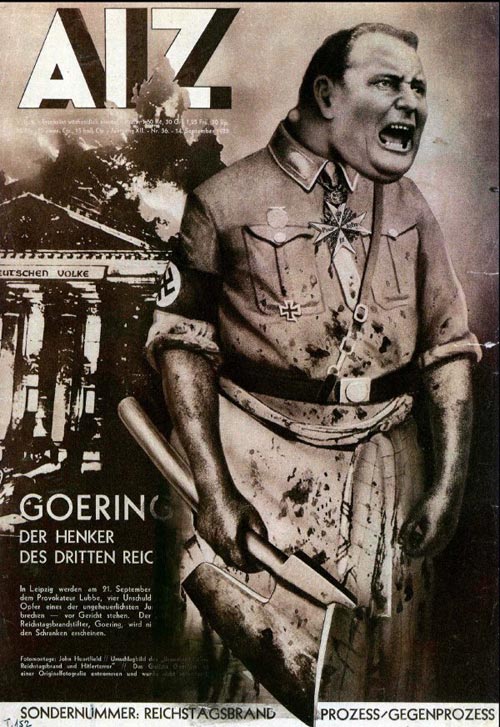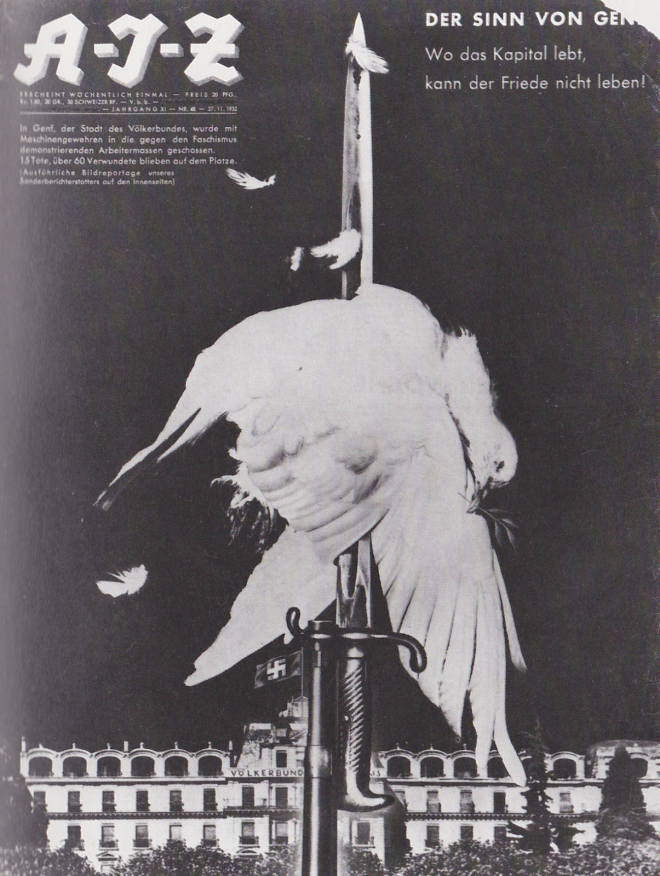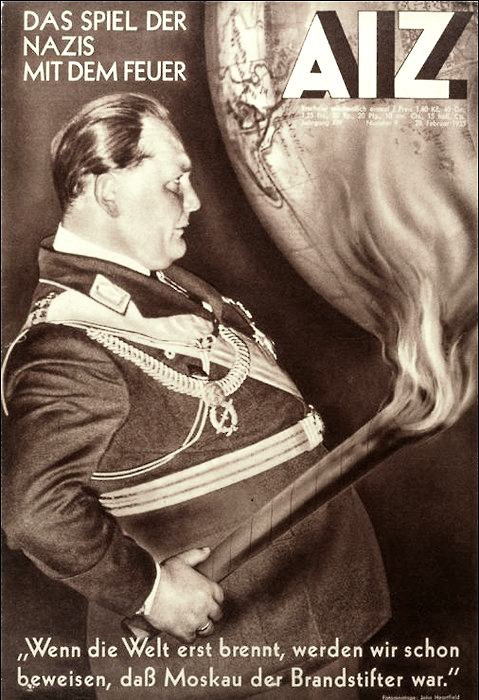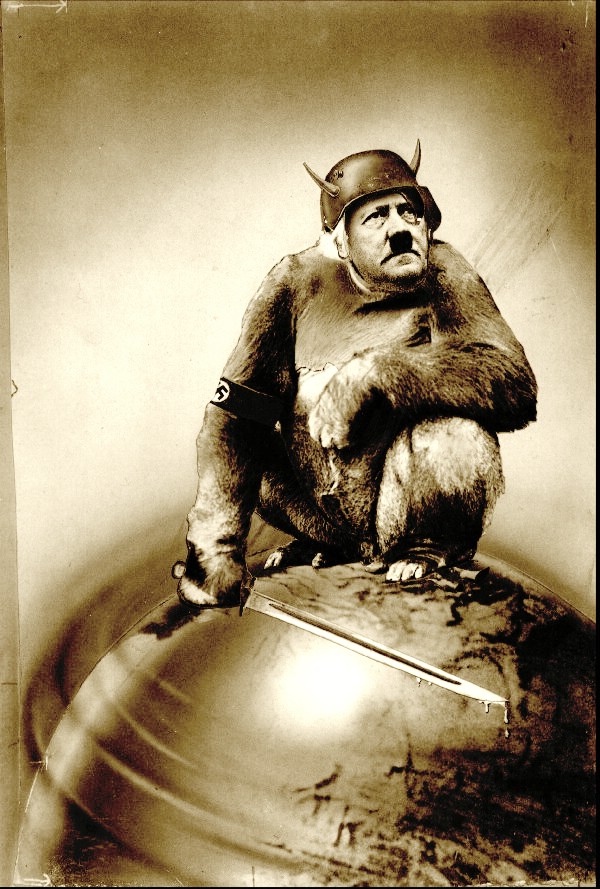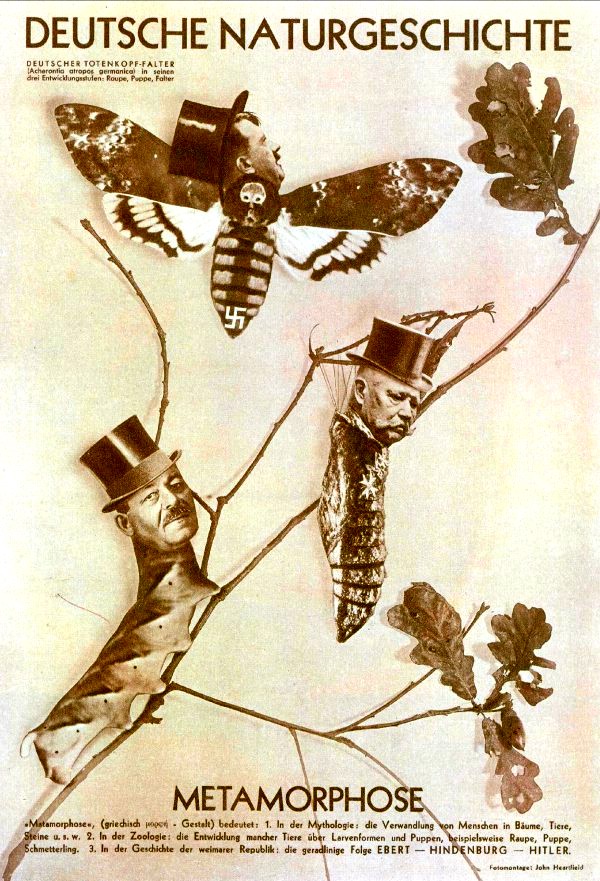John Heartfield (1891-1968) was a pioneer in photo manipulation and in the use of art as a political weapon in the design history.
In a very distant time from Photoshop, this genius photographer already created his photomontages, skillfully demonstrating to be far ahead of their time. All of his work was done by hand, which makes his art even more impressive.
He studied drawing, film and photography in Munich.
Some of his photomontages were anti-Nazi and anti-fascist statements, to satirize the stupidity and brutality of the Nazi regime.
He is best known for political montages which he had created during the 1930s to expose German Nazism. Some of his famous montages were created during the 1930s and 1940s.
- Adolf, the Superman (published in the Arbeiter-Illustrierte-Zeitung, Berlin, July 17, 1932),used a montaged X-ray to expose gold coins in Fuehrer’s esophagus leading to a pile in his stomach as he rants against the fatherland’s enemies.
- In Göring: The Executioner of the Third Reich (AIZ, Prague, September 14, 1933), Hermann Göring is depicted as a butcher.
- The Meaning of Geneva, Where Capital Lives, There Can Be No Peace (AIZ, Berlin, November 27, 1932), shows the dove of peace impaled on a blood-soaked bayonet in front of the League of Nations, where the cross of the Swiss flag has morphed into a swastika.
- Hurrah, die Butter ist Alle! (English: Hurray, the Butter is All Gone!) was published on the frontpage of the AIZ in 1935. A parody of the aesthetics of propaganda, the photomontage shows a German family at a dinner table eating a bicycle, where a nearby portrait of Hitler hangs and the wallpaper is emblazoned with swastikas. The baby gnaws on an axe, also emblazoned with a swastika, and the dog licks a huge nut and bolt. Below, the title is written in large letters, in addition to a quote by Hermann Göring during food shortage. Translated, the quote reads: “Hurray, the butter is all gone! As Goering said in his Hamburg address: “Iron ore has made the Reich strong. Butter and dripping have at most made the people fat.”
Heartfield’s artistic output was prolific. His works appeared as covers for the Arbeiter Illustrierte Zeitung (AIZ, Workers’ Illustrated Newspaper) from 1929 to 1933, a popular weekly whose circulation rivaled any magazine in Germany during the early nineteen thirties. During 1931 Heartfield’s photomontages were featured monthly on the AIZ cover, an important point, because most copies of the AIZ were sold at newsstands.
It was through rotogravure, an engraving process whereby pictures, designs, and words are engraved into the printing plate or printing cylinder—that Heartfield’s montages, in the form of posters, were distributed in the streets of Berlin in 1932 and 1933.
His photomontages satirising Adolf Hitler and the Nazis often subverted Nazi symbols such as the swastika in order to undermine their propaganda message.
Heartfield also created book jackets for authors such as Upton Sinclair, as well as stage sets for such noted playwrights as Bertolt Brecht and Erwin Piscator.
Below is the series of photos from 1931. Shows John Heartfield directing a photoshoot for the cover of Upton Sinclair’s Mountain City.
More Posters:
